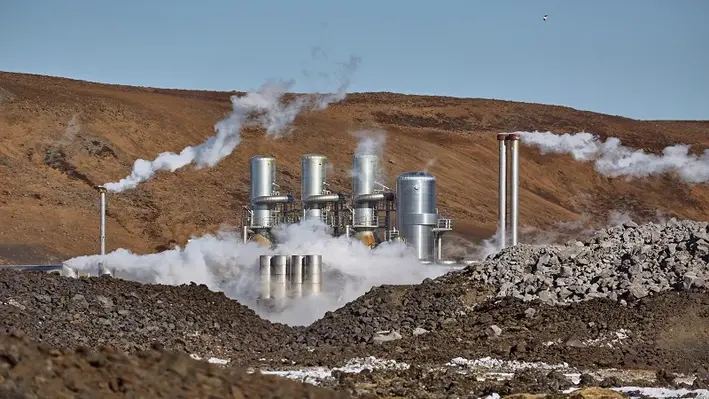
 Organic Rankine Cycle (ORC) systems provider Turboden has collaborated with enhanced geothermal systems company Fervo Energy on advancing the Cape Station project.
Organic Rankine Cycle (ORC) systems provider Turboden has collaborated with enhanced geothermal systems company Fervo Energy on advancing the Cape Station project.
With an anticipated total project capacity of approximately 400 MW, the project is Fervo's largest commercial endeavour in the geothermal industry. Situated in southwest Utah, the project will be a prime source for 24/7 carbon-free energy production.
Turboden will provide the engineering and procurement of power plant equipment for the initial 90 MW phase of the project. This includes the installation of three generators with six ORC turbines.
"We are excited to collaborate with Turboden on our Cape Station project," stated Tim Latimer, CEO and Co-Founder of Fervo Energy. "With this partnership, the ORC industry enters a new age of scale necessary to meet the skyrocketing demand for around-the-clock clean energy."
Paolo Bertuzzi, CEO and Managing Director of Turboden, said, "Fervo Energy's commitment to advancing geothermal energy aligns seamlessly with Turboden's mission to drive sustainable energy innovation. Together, we are forging a path towards a cleaner, greener future. The success of this project, alongside other initiatives in North America, prompted Turboden to consider establishing a US-based office. This strategic move enables us to leverage the support of Mitsubishi Heavy Industries America, further enhancing our operations and presence in the region.”
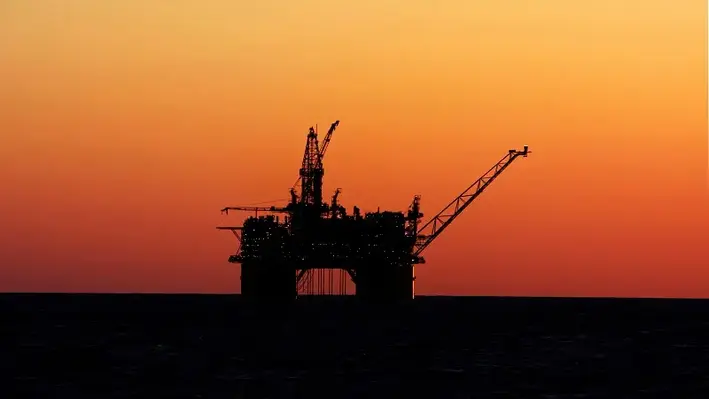
 It is not long now until the doors are set to open once again on West Africa’s leading well intervention conference, offering exclusive access to operator best practices, innovative technologies, exploration strategies and more.
It is not long now until the doors are set to open once again on West Africa’s leading well intervention conference, offering exclusive access to operator best practices, innovative technologies, exploration strategies and more.
This year’s instalment of the OWI WA 2024 conference will return on 28-29 May in the brand new location of Lagos, Nigeria, in the Sheraton Lagos Hotel. With the focus this year predominantly honing in on the combination of innovative well intervention technologies with strategic planning practices in order to optimise the performance of the ageing assets within the region, this event once again unties West Africa’s offshore community as they come together in a series of unique networking opportunities.
Featuring more than 30 expert speakers, 10 technology demos, and two technical breakout workshops, the conference promises to be an insightful and lucrative experience for all attendees. More than 200 decision makers are expected to attend, partaking in six dedicated networking events and engaging in a series of sessions covering key topics such as regional analysis, mature and ageing assets, strategic planning and management, and production optimisation.
This year, OWI WA 2024 has partnered with Women in Energy Network, an association dedicated to providing a platform for women who work across the entire energy industry chain in order to build confidence and enhance their professional progress.
For more information regarding OWI WA 2024, the full brochure can be downloaded here. For any additional enquiries please contact Jack Heffernan at
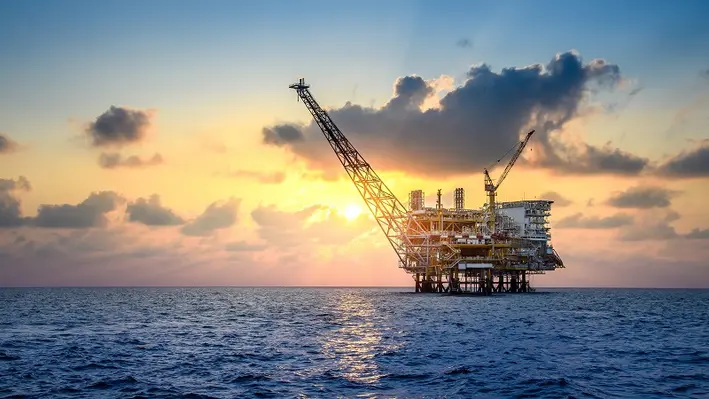
 The Department of the Interior announced a final rule from the Bureau of Ocean Energy Management (BOEM) that makes the American oil and gas industry accountable to cover decommissioning costs of offshore platforms on the US Outer Continental Shelf (OCS).
The Department of the Interior announced a final rule from the Bureau of Ocean Energy Management (BOEM) that makes the American oil and gas industry accountable to cover decommissioning costs of offshore platforms on the US Outer Continental Shelf (OCS).
This announcement comes as a relief for American taxpayers who had to otherwise bear the brunt of the huge decommissioning liabilities if the oil and gas companies failed to meet them.
Updating 20-year-old regulations, the new law demands financial assurance requirements for the offshore oil and gas industry operating on the OCS. The Government Accountability Office (GAO) found that previous practices followed by industry operators on meeting decommissioning deadlines were not as clearly defined, exposing American taxpayers to bear the cost in the end.
The final Risk Management and Financial Assurance for OCS Lease and Grant Obligations rule amendments address these concerns and reduce financial risks associated with OCS development by substantially increasing the level of financial assurances that operators must provide in advance.
“The American taxpayer should not be held responsible when oil and gas companies are unable to clean up after their own operations. The Interior Department is committed to ensuring that the federal oil and gas leasing program is implemented fairly, with accountability and transparency,” said Secretary Deb Haaland. “This final rule updates, simplifies and strengthens outdated requirements to ensure that taxpayers are protected and current operators are held responsible for their end-of-lease cleanup obligations on the Outer Continental Shelf.”
“For far too long, the federal government has failed to follow through on measures to ensure accountability for oil and gas companies operating offshore,” said Principal Deputy Assistant Secretary for Land and Minerals Management, Dr Steve Feldgus. “Coupled with our recent announcement from the Bureau of Land Management, the Department is ensuring that we have a modern oil and gas leasing programme that protects taxpayers’ interests.”
“The offshore oil and gas industry has evolved significantly over the last 20 years, and our financial assurance regulations need to keep pace,” said BOEM Director Elizabeth Klein. “Today’s action addresses the outdated and insufficient approach to supplemental bonding that does not always accurately capture the risks that industry may pose for the American taxpayer – like financial health of a company or the value of the assets that the lessee holds.”
According to the new rules, BOEM will use a credit rating from a Nationally Recognised Statistical Rating Organisation or a proxy credit rating equivalent to access a company's financial strength. The bureau will also consider the current value of the remaining proved oil and gas reserves on the lease compared to the estimated cost of meeting decommissioning obligations. If the lease has significant reserves still available, then in the event of a bankruptcy, the lease will likely be acquired by another operator who will assume the plugging and abandonment liabilities.
Companies without an investment-grade credit rating or sufficient proved reserves will need to provide supplemental financial assurance to comply with the new rule.
BOEM believes that the industry will be required to provide US$6.9bn in new financial assurances to protect American taxpayers from assuming industry decommissioning costs. To provide industry with flexibility to meet the new financial assurance requirements, the bureau will allow current lessees and grant holders to request phased-in payments in a span of three years to meet the new supplemental financial assurance demands.
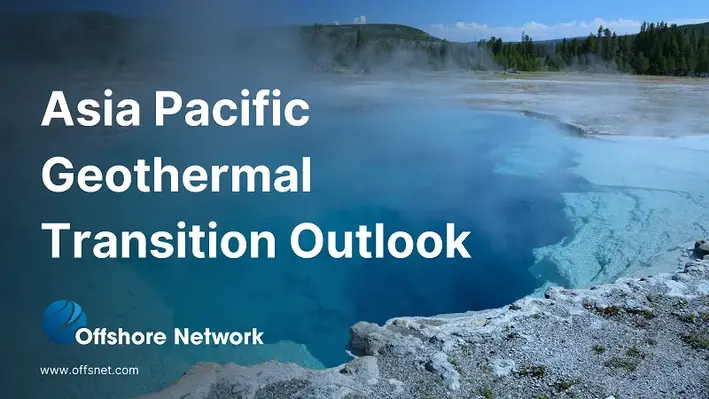
 With the race to a net zero future continues to heat up across the globe, more eyes are turning towards geothermal methods as a suitable alternative for energy. While the US continues to dominate the word stage when it comes to geothermal production, there is a giant lying under the surface across the Asia Pacific.
With the race to a net zero future continues to heat up across the globe, more eyes are turning towards geothermal methods as a suitable alternative for energy. While the US continues to dominate the word stage when it comes to geothermal production, there is a giant lying under the surface across the Asia Pacific.
With Indonesia boasting a predicted capacity of 27GW, and both the Philippines and New Zealand ramping up their installed capacity year-on-year, APAC has become one of the key global players in the geothermal game, already producing 35% of geothermal generation worldwide.
However, the burning question that faces the region is do the myriad of issues presented by factors such as limited resources, a lack of governmental funding and a challenging topography to contend with mean that the colossal potential lying underground will have to remain as such, rather than be utilised as a fruitful source of energy?
As the majority of geothermal resources are associated with volcanic activity in high terrain, exploration projects become more challenging and require additional resources and infrastructure, such that the region may not have access to. Financial stability is also a crucial factor waging a war against the utilisation of geothermal energy throughout APAC as the resource is not necessarily a commercial viable option for many operators.
Nevertheless, measures are being put into place to mitigate against these challenges, with government policies changing to accommodate green energy funds and private sectors and investing higher sums into the industry, there is a hope of prosperous future.
The Asia Pacific Geothermal Transition Outlook attempts to analyse the key players within the region and outlines where the pitfalls and mitigations lay ahead of the inaugural GTS APAC 2024 conference in Jakarta from 9-10 July.
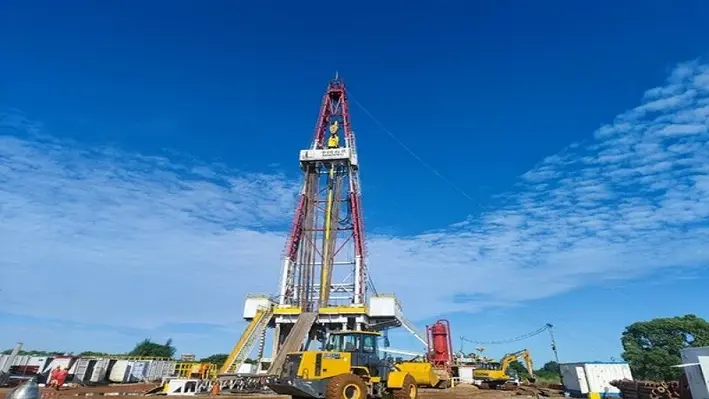
 In a breakthrough exploration of 250mn-year-old granite in South China, China Petroleum & Chemical Corporation (Sinopec) has completed the drilling of Fushen-1 Well in Hainan.
In a breakthrough exploration of 250mn-year-old granite in South China, China Petroleum & Chemical Corporation (Sinopec) has completed the drilling of Fushen-1 Well in Hainan.
At 5,200 m, it is the deepest geothermal exploration well in China.
Started in last August, the company notes this as a milestone reached in less than a year.
This has been made possible by Sinopec's deployment of several independently developed innovative technologies, including the combination of dual-drive drilling and high-pression injection, to reach the temperature limit of hot dry rock stipulated by the national energy industry standards, while forming the key technologies of detection and evaluation of deep geothermal resources.
Sinopec's next steps will include extensive research and field tests at Fushen-1 Well, building the first platform that brings together research, education, and experimentation of deep geothermal in South China. This will help formulate theoretical methods and technical systems applicable to the region, paving the path towards the country's 'Dual-Carbon' goal.
China's geological surveys have revealed that the hot dry rock geothermal resources within the range of 3 kms to 10,000 m underground in China's land area are equivalent to 856 trillion tons of standard coal. Every 2% of them equals 2,993 times the annual energy consumption of China in 2023. The country has an accumulated geothermal heating capacity of nearly 100 mn sq m with several multi-million-square-meter regional geothermal heating projects already built and in operation.
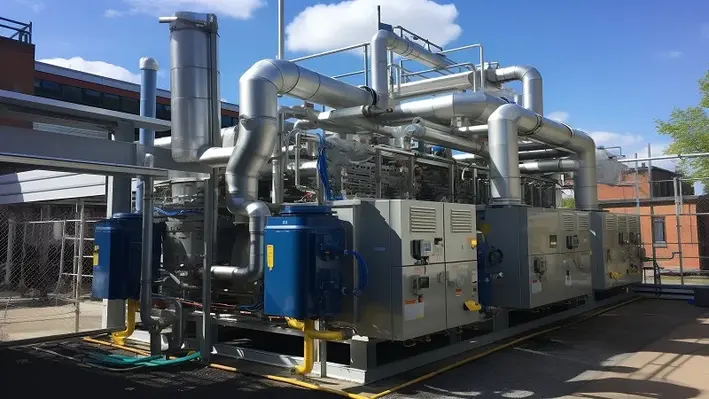
 Infrastructure service provider Core & Main has entered into a definitive agreement to acquire the entire asset range of Kentucky-based, high-density polyethylene (HDPE) pipe distributor Geothermal Supply Company.
Infrastructure service provider Core & Main has entered into a definitive agreement to acquire the entire asset range of Kentucky-based, high-density polyethylene (HDPE) pipe distributor Geothermal Supply Company.
"From the beginning, GSC set out to fill a void in the industry by delivering the highest quality HDPE products and services to help customers achieve success. Joining Core & Main will offer our team continued opportunities to deliver on these goals," said Matt Lile, Owner and Operations Manager of GSC. “I am immensely proud of our progress and growth over the years and eagerly anticipate all we can accomplish as part of Core & Main."
GSC's wide base of fusible offerings help in the installation and maintenance of geothermal systems.
"Adding GSC to the Core & Main family will create exciting new opportunities for us in an important and expanding area for HDPE. The GSC team's wealth of knowledge and expertise in the industry fit in well with our existing fusible product offering, and we are confident this will be a positive partnership for both new and existing customers," said Steve LeClair, Chairman and CEO of Core & Main.
"GSC has set an exceptional example with their unwavering commitment to providing top-notch service and building strong customer relationships," said Jack Schaller, President of Core & Main. "We look forward to welcoming them to Core & Main and incorporating their expertise to further strengthen our fusible offerings."


Expro, a provider of energy services, has highlighted the company’s achievements in 2023 along with the progress it has towards its near- and long-term environmental, social and governance (ESG) objectives.
In its 2023 ESG report available here, the company highlighted projects delivered throughout the year, including a custom solution to support the testing of new geothermal technologies in Oklahoma and supporting a pilot project in Japan with carbon capture utilisation.
“In an ever-evolving energy landscape, Expro remains steadfast in our commitment to driving positive change,” remarked Mike Jardon, Chief Executive Officer of Expro. “I am proud to share our achievements from 2023 in this comprehensive report which serves as a testament to our progress in environmental, social, and governance strategies, underscoring the integral role partnerships play in cultivating sustainability for Expro and our clients.
“As we step into 2024, we remain dedicated to fostering a low-carbon future and intend to play a key role in enabling a low-carbon transition.”
Standouts from the 2023 ESG report identified by Expro included:
• Developing lower carbon solutions: Expro has turned commitments into actions to help address customers’ most complex challenges in sustainability. This includes new developments in game-changing projects spanning carbon capture utilisation and storage (CCUS), natural hydrogen and geothermal in Australia, Colombia, Germany and Japan.
• Reducing Scope 1 and Scope 2 greenhouse gas emissions: Expro reduced emissions by 11% from a 2021 baseline, driven by increased use of renewable energy while increasing its ability to track Scope 3 emissions, setting the stage to further integrate ESG reduction initiatives throughout the supply chain.
• Advancing the Expro portfolio with sustainable energy solutions: Expro took large strides forward in its work within the areas of geothermal and CCUS, adapting the company’s solutions across three emerging markets.
• Prioritising safety: The organisation renewed its commitment to safety in the workplace along with the second annual Expro ENGAGE initiative designed to focus on highlighting employees’ safety successes, while teaching and reinforcing best practices, and reducing the company’s Lost Time Incident Frequency (LTIF) to just 0.06.
• Fostering a collaborative and inclusive culture: Believing in the importance of diversity in the organisation, Expro is reaping the benefits of a collaborative and inclusive workplace where ideas are shared through the rollout of Expro Culture of Care and the 2023 Elevate employee pulse survey that ultimately informed company action plans for 2024.
Hannah Rumbles, Expro Director of Sustainability, Marketing and Communications, added, “I am excited to advance our commitment to innovating with purpose, grounded in our values of People, Performance, Partnerships and Planet. Over the past year, we’ve focused on the maturation of our approach to sustainability that we expect will accelerate our journey to a low-carbon future. With this strong momentum, we remain committed to empowering our customers while strengthening our own sustainability practices and performance.”
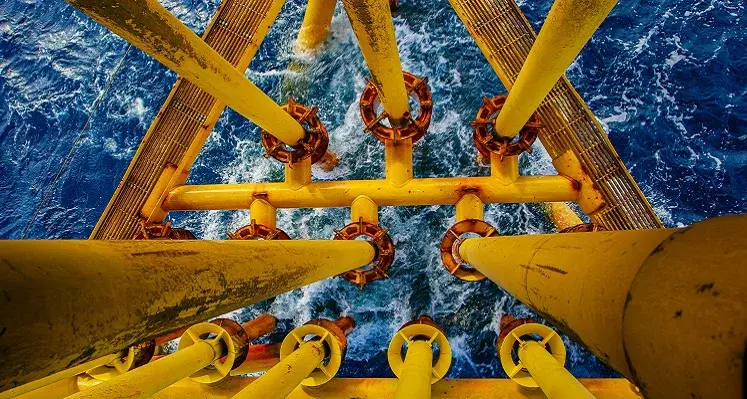

Private equity investors Buckthorn Partners and One Equity Partners (OEP) have acquired Acteon Group, an international offshore energy infrastructure services businesses, in a move to develop the organisation’s capabilities in key markets.
The two entities have announced a significant injection of investment that will be used to improve Acteon’s standing with suppliers and customers. The company has been active since 1989 and now provides specialist engineering, services and technologies across all phases of the offshore lifecycle in 14 countries worldwide.
A key focus of this new occurrence will be placed on developing the organisation’s capabilities across survey, foundations, moorings, decommissioning, and consulting engineering services in support of the offshore renewable offshore oil and gas sectors.
“Acteon’s products and services are key to the energy transition in constructing, maintaining and supporting offshore energy infrastructure,” remarked Rob Willings, Partner at Buckthorn. “We are very pleased to acquire Acteon and its market-leading capability in managing offshore renewable, and offshore oil and gas infrastructure. Our ownership will bring stability to the business, and investment and expertise to grow and develop the company.”
Alongside the investment, the senior ranks of Acteon have been bolstered by the appointment of Brice Bouffard Chief Executive Officer. Brice brings a wealth of business experience highly relevant to Acteon and its key segments.

 With the addition of Geothermal Exploration Permit 2049, Whitebark Energy Limited further expands it’s potential geothermal portfolio, which now stands at 4,464 sq kms
With the addition of Geothermal Exploration Permit 2049, Whitebark Energy Limited further expands it’s potential geothermal portfolio, which now stands at 4,464 sq kms
EPG2049 comprises of 1250 sub-blocks within the Cooper Basin, which is about 100km West of Windorah in South-West Queensland. This comes after the acquisition of EPG2037 in the South-East Queensland region which covers an area of approximately 589 sq kms and is roughly 25km from Brisbane.
EPG2049 makes up approximately 3,875 sq kms and was identified following a comprehensive review of a number of geological considerations and future market access availability in the region. It will also consider the commercial viability of the permit and look into its historical well data to further gauge the potentials of the asset.
Following an energy-to-market analysis, by the company, EPG2049 is likely to support not only geothermal development but also green hydrogen production. Initial indications from offset well data pointed to an elevated geothermal gradient in the area with considerable potential to produce long-term, dispatchable renewable energy and green hydrogen for the region.
In collaboration with its technology partner, the company has begun to identify a works programme for EPG2049 and EPG2037, including timelines and financing.
Whitebark General Manager, Adam Stepanoff said, “The acceptance of EPG2049 in conjunction with our recent acceptance of EPG2037s application, represents an exciting development in the company’s geothermal strategy. Along with our technology partners, Whitebark will be in a prime position to deliver geothermal energy and green hydrogen into the national highway network.”

 Exploration and production company Energean will be taking control of the decommissioning of Tors and Wenlock fields in the Southern UK North Sea, which are now at the end of their economic production capability
Exploration and production company Energean will be taking control of the decommissioning of Tors and Wenlock fields in the Southern UK North Sea, which are now at the end of their economic production capability
As part of the project the company has put together a specialist team, including Andrew Shepherd as UK Decommissioning Manager to carry out the approved work plan.
Waldorf Production, who operated the two fields, has officially passed the baton to Energean who is also a majority owner in the fields, with 68% ownership of Tors and 80% of Wenlock. The company had acquired the stakes in 2020 from Edison Exploration & Production SpA.
Tors and Wenlock reached the end of production in 2020 and 2022 respectively.

 The Colorado Energy Office (CEO) has opened its first competitive application for the state’s Geothermal Electricity Tax Credit Offering (GETCO), a programme to encourage elevated levels of geothermal production and investment.
The Colorado Energy Office (CEO) has opened its first competitive application for the state’s Geothermal Electricity Tax Credit Offering (GETCO), a programme to encourage elevated levels of geothermal production and investment.
Following the Governor’s ‘Heat Beneath Our Feet Initiative’ to explore more deployment opportunities for geothermal technology within the state, the new tax programme allows for eligible utilities, private businesses, local governments and public-private partnerships to apply for two different types of incentives. The two incentives include an investment tax credit (ITC) for exploring and developing geothermal resources, and a production tax credit (PTC) for producing geothermal electricity.
The ITC can cover up to 30-50% of eligible costs for selected projects not exceeding US$5mn. A total is US$35mn is available in ITCs through to 2032, while the PTCs provide a US$0.003 credit for every kwh of geothermal electricity produced, up to US$1mn per entity per year through to 2032. The first application cycle is open until 30 June, 2024.
Colorado Energy Office’s Executive Director, Will Toor, stated, “This incentive encourages geothermal electricity development across Colorado, advancing innovative technologies that will create jobs in just transition communities and help achieve a 100% clean energy economy here and around the world.”
Colorado utilities are currently on track to reduce emissions from the power sector by more than 80% by 2030 though a mix of clean energy sources. A recent study commissioned by CEO found that the lower cost pathway to achieve 100% clean electricity in Colorado by 2040 will be to rely on geothermal energy, alongside wind, solar, storage and clean hydrogen.
“While wind and solar energy can meet the majority of our electricity needs, geothermal energy is essential for delivering reliable and affordable clean electricity, regardless of the weather,” Toor continued.
Colorado Governor Jared Polis said, “Geothermal energy means lower costs on Coloradans’ energy bills and cleaner air. By breaking down barriers to this clean renewable energy resource, Colorado can move closer to our goal of 100% renewable energy while saving people money on energy, improving reliability, and protecting our air quality.”
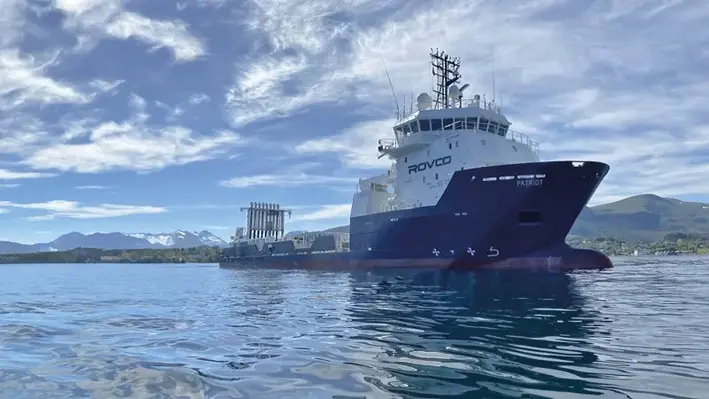

The MV Patriot has become the latest addition to the Rovco specialist fleet, joining the company’s existing two site characterisation vessels.
The leading provider of tech-powered offshore wind solutions that is valued at nearly UK£200mn, has chartered the new vessel as part of its mission to accelerate the offshore energy industries clean energy transition through deep-technology solutions. It is committed to combining AI, robotics and simultaneous location and mapping (SLAM) technologies. This motivation is being driven by the growth of the offshore wind sector as well as the ever-expanding decommissioning needs of the oil and gas industry.
The 74 m MV Patriot is expected to scale-up the company’s subsea capabilities. It boasts an active heave crane and 682 sq m deck capacity to support Rovco’s construction and maintenance expertise. At the same time, it also consolidates the company’s site clearance ability, including debris and boulder removal and unexploded ordinance navigation.
The vessel’s DP2 station keeping capability will reportedly provide a stable platform for launch and recovery in marginal weather, allowing Reovco to schedule wider working windows across surveys and remotely operated vehicle (ROV) inspection. Indeed, the MV Patriot will be permanently installed with best-in-class ROVs while the WROV on-board will be fitted with SubSLAM technology to enable live inspections and precise 3D reconstructions. Full site data capture offshore will be enabled by the MV Patriot and this, in tandem with ship-to-shore communications will facilitate real-time decision making.
“We’re delighted to be adding the highly versatile and capable MV Patriot to our fleet,” commented Director of O&M Marc Coull. “This provides a further platform for our leading technology in areas such as visual pilot assist, autonomous general visual inspection, as well as ensuring that auto-eventing and reporting can be utilised more widely.”
The vessel will be delivered to Rovco for a period of three years with the option to extend by a further two.
Page 50 of 111